
Sep '06 - May '08
Or so our studio TA so eloquently stated at the end of our sessions yesterday.
So, a couple of weeks into the semester I've managed to accomplish a couple of things:
1. Finalized my schedule, which goes something like:
_Urban Design Studio—Bratislava: Design of an extension to the Capital of Slovakia (Profs. J. Beinart & J. De Monchaux)
_Ideal Forms of Contemporary Urbanism (Prof. A. D'Hooghe)
_GSD 4405 Other Modernities: Architecture and National Identity in Global Context (Prof. S. Bozdogan)
_Thesis Prep
and finally my TA-ship for:
_Advanced Seminar in City Form (Prof. J. Beinart)
2. Started to get a productive swell of pre-thesis paranoia/stress
I write my thesis in the spring, which is not that far off, or so I keep telling myself. My interest is an amalgam of interelated issues that have, since my first studio here last fall, started to aggregate into (what i think) is an underlying question - a question that I foresee as becoming my thesis (or so i hope). It goes a little something like this (its still formative, so be gentle):
My interest has to do with the development of hybrid urban form in developing global cities. Specifically, how do "imported" forms of urbanism, typically thought of as symbols representing a specific type of globalized modernity, become appropriated by the cultural mass of their surroundings? Is it possible to identify a pattern of appropriation regarding these forms, and thus identify an underlying spacial mechanic? If this is indeed possible, is there a potential for deployment of these hybrid urban forms to create an enriched sense of modern identity, one that escapes the polarizations of east/west; new/old; global/local; exploiting/exploited?
My thesis will take place in Mumbai. It will be (i foresee) an infrastructural project that seeks to use the above postulates to solve a series of closely related problems:
1. Traffic Congestion: Mumbai's traffic system is greaty overstressed. While the city has an incredibly successful commuter rail system, the lack of a rapid transit system connecting nodes within the city has contributed to heavy vehicular traffic problems.
2. Rail Line Squatter Settlements: The death toll resulting from the settlements along rail lines by squatter populations has not shown any signs of abatement. While squatter populations have created markets and economies of their own, the lack of space within the city has driven people to settle in mortally hazardous environments.
3. Lack of Public Open Space: Mumbai has, per capita, the least amount of open space of any city in the world (at least, last I checked). The mechanics of Public Space in the Indian context are very different from those of other cities in the world, particularly from Europe -- creating opportunities to deploy public space in a different fashion than would normally be conceived of.
my task: use point #3 to see if i can't come up with a potential solution for points #1 and #2 --- and in the process, prove the whole paragraph above (about hybridity and all) plausible, not just as a theory, but as a direct framework for understanding built form in a specific context.
UGH. i know thats a lot of stuff, and probably by the end of it all, i'll be paring things down. But as far as where my head is, thats about the long and short of it.
3. Actually keep up with work
well, at least for now.
and finally,
4. Update my blog
which hasn't happened in a while, mostly because my summer was spent in reclusion, entrenched in deep thought -- much like Kant's transformation into a hermit for 11 years before he produced Critique of Pure Reason (or at least, thats what I like to tell myself).
In truth, I spent my summer in two parts:
Going back home to St Louis, living with the 'rents, doing absolutely nothing productive, and enjoying every minute of it.
In Cambridge, collecting materials, getting a bibliography put together for my thesis, and taking a week off to help a friend with a a small design/build renovation project in Boston.
--
So, I'll cap this off with some photos, because its an easy way to make this post even longer (because we all know there aren't enough long blog posts on the internet.) These are from my studio's week long trip to Bratislava we took at the beginning of the fall term. I'll wax poetic about the studio in the next post. Till then, you guys play nice.

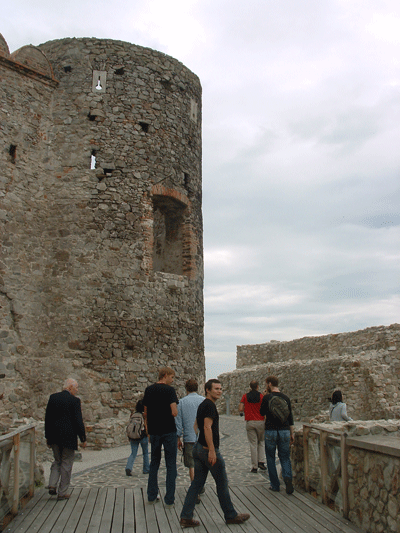
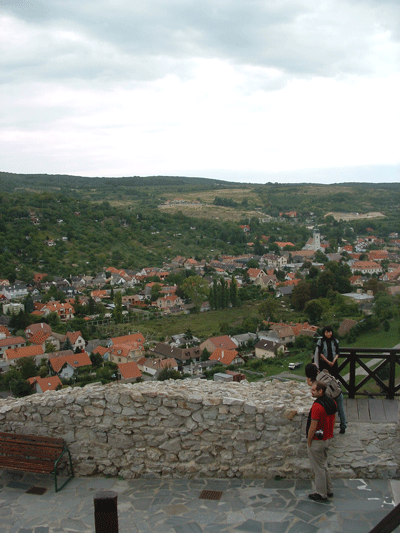

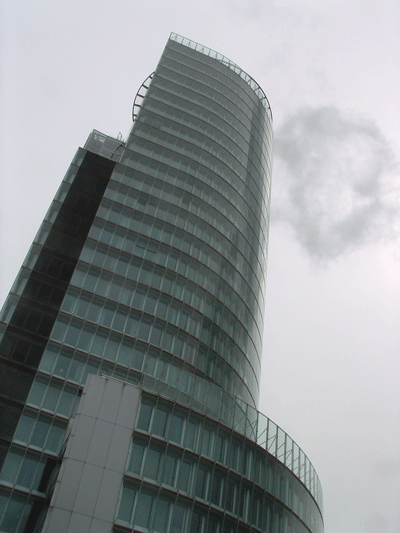
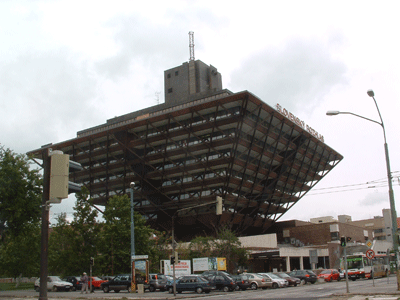

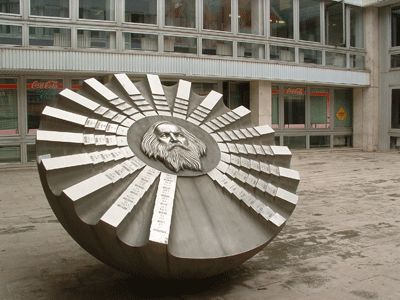



11 Comments
whoa... that upside down pyramid thing looks a lot like the pier here in st. petersburg...
the direction for thesis looks promising, but are you sure that you don't want to do your thesis on sustainable live-work spaces? or a center for parkinsons disease? or a shopping center in santa cruz?
hey, Bratislava is my hhome town and i studied at STU one year...and then i left....
I am currently in germany but if u need any help from the natives just let me know.
And good luck.
PS: have u been to chatam sofer?? U have to see it!!! beautiful architecture
http://www.chatamsofer.com/
"Is it possible to identify a pattern of appropriation regarding these forms, and thus identify an underlying spacial mechanic? If this is indeed possible, is there a potential for deployment of these hybrid urban forms to create an enriched sense of modern identity, one that escapes the polarizations of east/west; new/old; global/local; exploiting/exploited?"
correct me..but...ur search for a unified/unifying 'spatial mechanic' seems to run counter to the sentiment that modernism in its colonizing uniform application failed. your usage of the words 'imported' and then the gentler more progressive 'appropriation' might still be telling. i doubt that this is out of an interest in the general well being of global inhabitants rather than, perhaps, being primarily a megalomanic and intellectually self referential aesthetic, a mental itch progressive altruism.
does 'importing' really escape the east/west polarizations? or does the rhetoric tick too many boxes... perhaps the very fact that one's language uses the already generalizing description of 'east/west' from the onset defy and betray the purpose of 'depolarization'...and that the parcelling out of 'modern identiy' to the 'appropriating' passive body is tantamount to precluding diversity. depolarizing through obliterating differences and frictions, a spatial mechanic that flattens rude topography and spreads (what is after all) western candy to the barbaric kids, a harmony of mild mannered spatial-machine consuming subjects sharing the rubrics of a global (ie 'western') consciousness. kwestions...
correction: a mental itch in the guise of progressive altruism.
rahul mehrotra just started teaching at mit. he is a mumbai expert and will be a great resource for you as you work through your thesis. good luck and keep us posted.
I'll respond first to your second comment, noctilucent.
You're correct, importing does not escape east/west polarizations. In fact, if anything, it tends to reinforce them (the modern, civilized urban forms of the west vs the romaticized, historically static forms of the east). Globalization, generally speaking has propagated BOTH sets of images --- that of both the framing of "native" inhabitants as the exotic and to-be-educated "other," as well as the romanticized pseudo-myth of indigenous culture, statically frozen in nostalgic images of specific periods of history (In Beijing, for example, it was American architects who, in their orientalist fascination, created what they understood to be the "Chinese" style, and propagated that style throughout Beijing, instated its dissemination in the Chinese architectural education, and contributed to a period of revivalism that celebrated a period in Chinese history that didn't actually exist - a history artificially constructed by American architects who wanted to celebrate all that was native to the "local culture." The style was later publicly - and popularly - deposed during the Cultural Revolution). It would be rather difficult to address a goal of depolarization without having to identify, at least in some form that human can understand and replicate in printed and spoken form, the "enemy" as it work (in this case, the myth of east v. west).
As for your comments regarding the "parceling out of western candy to the barbaric kids," --- frankly, i find this completely absurd, and more than a little offensive. You've drawn up a picture completely opposite from anything close to the scope/intent of my propositions, The fact of the matter is that the whole idea of the thesis is to avoid a pattern of development akin to much of China or Dubai - where urban form and identity are understood as a form of "branding" that has alot to do with appealing to "Western" markets and sensibilities -- which has been referred to by some as a "post-nationalist nationalism." The first step towards avoiding this is NOT a reactionary romanticist retreat into the realm of "us v. them" or a "native v. invader" mentality which is what your remarks would suggest -- difference should not be ARTIFICIALLY CREATED in order to form an agenda. The idea of the "noble savage" (which, whether you like it or not, is what your comments are dangerously close to) is both crippling and demeaning.
My intent, which is not some mental itch, is to find potential framework where hybridity, through program and spacial "imaginaries" (a play on Appadurai's social imaginaries) creates a modern urban form that does not have to resort to superficial stylistic concerns (i.e. facade treatments), avoiding what has been called the "Chinatown Effect."
Isolationism is not the answer to the urban "kwestions" of developing global cities. Liberal ideologies should not result in reactionary policy. From its inception Mumbai has played a crucial role in the global scene, from its former prominence within the British Empire, to its current cultural position within Asia. This prominence still flourishes despite Mumbai's many problems. Dealing with this gap is a major question - one that poses problems, but also potential opportunities to create an urban identity that begins to inform the future patterns of modern "globalized" development within the city (because like it or not, it will happen.) Proclaiming something is "wrong" then retreating into cultural exclusivism is not the answer.
-----
jafidler: yes, I am looking forward to speaking with Rahul this semester, and discussing the project with him. I have researched the urban development history of the city with some detail (a semester long case study undertook in my City Form Methods class last year) and Rahul's books and research were a major asset to the development of my understanding of the city. Thanks for the well wishes, and I'll update as much as I get a chance to.
correction, i meant to write
"I have researched the urban development history of the city with some detail (which began with a semester long case study ...)"
1- note that i had not portrayed or envisaged the locals as "noble savages".my concern was solely your discouse and not to mythologize or postulate, on my part, a nature for the 'natives' .. as if there could be one.
2- your choice of words...'importing' 'appropriating'...'east/west'...i don't buy that its impossible to steer away from those dogmatic and negatively naunced printed and spoken forms. a body that wields that language is immersed in its logic.
3- you have presented mumbai as a problematic site rather than as a complex environment (as a local and global entity)that is self sufficient and has no need for your 'imported spatial mechanic' in fact, you have only been able to address it as a passive body and have not indicated anywhere that you might actually import FROM it rather than to it. this has nothing to do with actually coming up with specific solution to specific problems...a very reasonable ambition. but your discourse is so overblown and megalomanic...you pose the whole city as a symbol of its problems your agency proposes to address. this manner of presenting cities and problems is widespread.
4- from 3 ... and here this covers this trend for prestigious and well funded schools to send droves of its mostly rich students world wide to find solutions for generally (traditionally) poorer countries when their own backyard might be teeming with problems. this altruism might hold a genuine affection somewhere...but i still think its this mental itch...a marriage.like going to italy to paint, nice light...
5- "correct me..but...ur search for a unified/unifying 'spatial mechanic' seems to run counter to the sentiment that modernism in its colonizing uniform application failed."
besides, beyond the rhetoric, i seriously don't know what this "spatial mechanic" is ...so we remain at the level of rhetoric and attitudes. i'm also quite tired now...
1. I feel that in order to appropriately deal with a body of thought that I personally disagree with, I need to engage that body of thought on the terms it presents - a continuous re-invention of the the vocabulary would only run one around in circles, constantly trying to find the words with just the right "nuance." Engaging a problem in popularized terms does not necessarily preclude that argument from creating, in the end, its own logic.
2. My entire position is that Mumbai is a complex and rich environment. Look at the apartment blocks developed along Marine Drive, and you can see examples of architecture/urban design that don't respond to this complexity at all. Look at the region of Mumbai northwest of the Fort (the area of the city developed while the fort walls were still existing) and you see a complex, dense, congested, and rich environment, while culturally and experientially "invigorating" (for lack of a better word at the moment) has problems of its own (infrastructure both in terms of utility systems, and transport being a major issue). I never intended turn a blind eye to this side of the city - in fact, it plays a central role in my analysis.
Mumbai, like many other cities in South Asia, wants to "compete" globally (a term in and of itself which is problematic). This has not yet happened in Mumbai, although perhaps with the construction of the city's first skyscraper, it has begun. Sadly, this well-treaded ambition has, in recent history and in other cities, devolved into a search for meaning through iconography. This type of development precludes the inherent potential within their own context. My thesis hopes to run against this tendency. Mumbai's has many plans for future development, one such proposal being the construction of a new metro rail system (there are others, but I'm still in the process of compiling a list). My aim is to take one of these projects and use it as a testing bed for the thesis -- i have not yet settled on a project, which is why my verbage thus far has been abstract in terms of the physcal project itself.
3. As for megalomania, I really have no idea what your talking about, or any idea on how to respond. You'll probably chalk that up to some sort of stereotype on rich educated yuppies from the north east. My interest with India has to do with my experiences there, spending the summer months there with my family, and perhaps, something to do with being Indian. MIT is not "sending" me there, and I am not there for the "nice light" as it were. In addition, I'm not rich, nor have I ever been (yes, i know, compared to the population of non-industrialized countries i'm rich, but in the context of the USA, I'm as economically middle class as the economic middle class gets.) Its odd how you steep to generalizations after accusing me of doing so.
4. My term "spatial mechanic" is derived from a hypothesis that stems from Arjun Appadurai's writing on social imaginaries. The way cultures build, how they have, intrinsically, settled on certain configurations of space, or conversely, how they have adapted "alien" urban forms to suit their own needs (ie the modification of rapidly deployed Modernist housing blocks in Athens) to create hybrid environments -- this is what I am trying to get at. Perhaps the better statement is "globalization, in its colonizing uniform application" -- for example the "tower in the park" type housing in the Cuffe Parade district of mumbai, built in the 1960s, which does not propose any kind of interpretation of the cultural context, or even respond to it for that matter. So, in the terms I just described, I hope I've cleared up any confusion about the "rhetoric" of the term "spacial mechanic" and its seemingly contradictory place within the argument. Maybe I need a new term for it, but I haven't come up with one yet, and I have till spring term to do so, so I'll stick with this one till I get any better ideas.
Block this user
Are you sure you want to block this user and hide all related comments throughout the site?
Archinect
This is your first comment on Archinect. Your comment will be visible once approved.